Page created April 17, 2012
Update History
2012/05/09 - Complaints ... some users are reporting:
- Camera lockup if highlights and RGB levels simultaneously active.
- AF working differently from one side of view to other.
- "Yellow" (according to Rockwell who is now a Canon boy) or other off-color LCD.
- Amp noise.
After much testing I have not been able to reproduce any of these problems. There's no lockup and the AF is precise and fast under all circumstances. Beside the D300 and D7000 displaying the exact same image simultaneously, the LCD does not demonstrate any color cast. Can't provoke amp noise either.
www.dpreview.com has just published its in-depth review of the D800. I don't find anything in there at variance with my personal findings.
2012/04/22 - ISO 8000 test images added to High ISO page. Better than you might expect.
2012/04/21 - Purchased the amazing 24 - 70 mm Nikkor at London Drugs this morning. Why the drugstore? They have a great camera department staffed by people who know what they are doing, the prices are competitive and they are nearby.
Couldn't resist after seeing all the glowing reviews. Two images taken with that lens have been added. Some reviewers report field curvature wide open at 24 mm. I shot a brick wall and a couple of other flat surfaces at those settings and cannot see the effect so: (a) either Nikon has fixed this in recent batches or (b) there is unit to unit variation or (c) I don't know what I am doing. I am investigating (c) further before making any assumptions.
This lens with the D800 comprises a truly formidable photographic instrument and - a potentially lethal weapon at nearly 5 lbs (!). You're not liable to forget you have it with. Your neck or arm will be reminding you every step of the way. It's worth it though with truly eye-popping results. Scroll down for the JPEGs.
2012/04/19 - High ISO snapshot page added. Click HERE.
20122012/04/19 - Two more snapshots at low ISO added to this page. More on the 20th - Just took a couple of snapshots at ISO 6400 and don't see much noise in NEFs - only some very fine, tight "grain" close-up at 100%. Very odd how noise is not more apparent in deep shadows.
2012/04/19 - The FX Advantage (will be moved to main body of article at some point)
The best thing about FX is what's not publicized. Large source images are simply easier to work with. Because they don't have to be enlarged as much to reach a desired presentation size you are not fighting so much the erosion of detail that you run into when re-sizing DX. That makes sharpening a less finicky process and you may not need any at all. Similarly, undesirable artifacts arising from less than perfect saturation and contrast settings (for example) are often invisible at these reduced enlargement factors. I knew this from doing so much work with medium format versus 35 mm film but didn't quite expect it with FX. I used to be an FX skeptic but am eating crow these days. Despite these large files taking a bit longer to load, save and process (per step) you may find, as have I, that the total time needed to prepare one for presentation is often actually less than for a comparable DX image. Despite misgivings about these files sizes, you could actually realize a time savings as compared to working with DX.
2012/04/18 - "Beans" image added.
This page will be regularly updated as more experience is obtained.
Sample images are at the bottom of this page.
You can leave a message for the author of this article by clicking HERE or share observations in the Nikonians forum.
Introduction
Few cameras have received so much pre-launch publicity as the D800. Expectations are very high. At the time of writing this, the D800 offers the highest image resolution available in a full frame sensor with possibly standard-setting dynamic range as well (at least at base ISO).
There are so many reviews being published and promised we probably do not need yet another extensive foray into the subject here but a few personal observations and sample images might prove interesting.
Note that I seldom need or use "advanced" features such as in-camera editing, HDR, face detection, wart removal, etc. My primary interest is image quality, my heritage being that of the m/f view camera environment where you had to throw a cape over your head before taking a picture and VR meant a tripod. Consequently you won't find much here about features/gadgets. I am interested mainly in NEF/RAW images and how these look post-conversion to TIFF with some processing.
Field Experiences and Impressions
An exceptional "pro" camera. Noticed so far:
For pixel peepers:
- The first of several high-end cameras I have owned to have absolutely no dead or stuck pixels. When present, these are very unlikely to affect the appearance of finished images anyway but it is remarkable to find none in any of the usual tests designed to expose them. Lucky, perhaps.
- No amp noise (although some have reported this).
- No live view or other LCD problems despite a few negative reports. Rockwell says the LCD is "yellow". No idea what he is talking about, which is becoming more and more the case these days :~ If he has early onset of cataracts that could explain the problem.
- Excellent dynamic range, apparently exceeding the D7000 but I don't intend testing this. You can find lab tests at the DXO site.
- Note that sensor absolute resolution is almost identical to that of the D7000. Where you actually pick up extra resolution lies in being able to use longer focal length lenses to compose on an FX sensor the same field of view requiring a shorter focal length on a DX sensor. (I will be preparing a long article on resolution subjects later.)
In short, no technical flaws/shortcomings at all in my unit. That doesn't mean you will find no flaws with yours. There is always some unit-to-unit variation.
For Photographers:
- Outstanding image quality visibly besting the D7000 providing you don't crop and are, therefore, framing the same field of view using longer focal length lenses. FX is addictive.
- No camera-shake issues. Nikon has been publishing some stuff about how with this camera you must have better control of technique than with, say, the D7000 or D700. This doesn't make sense. Observe good technique as you would for a D7000 and you will be fine. I have not observed anything especially onerous in regard to getting fine hand-held shots, even with non-VR lenses. Think about it ... since you do not have to enlarge these images as much to achieve a certain presentation size, camera shake should be no more a problem than with a camera having similar pixel density but a smaller sensor.
- Operationally very similar to the D7000. Familiar feel and layout.
- Auto-focus is very fast and accurate. Handles a finicky lens like the 105 mm Micro Nikkor better than other bodies. No problems - as reported elsewhere - with short FL lenses.
- Accurate auto-exposure - No problems noted. The matrix mode is excellent. We should be able to take good AE for granted but some people remain nervous owing to the D80 situation.
- High ISO performance - For me, ISO 800 is plenty but for some, nothing is high enough. You can find ISO 6400 shots HERE. I cannot see noise that would visibly affect an image at practically any enlargement but would expect some dynamic range compression (not tested). This is looking very good indeed.
- It feels heavy and it's big compared to the D7000. This is by no means a shirt-pocket camera.
- A phenomenal value at $3000.
- "Pro" construction with weather sealing.
- If you change metering modes a lot (I do) you will love how the modes are now on a rotary switch on the camera body right near your thumb. No more figgling with a menu for this.
- Working with these large images is reminiscent of working with medium format scans. Everything is easier to do because less needs to be done. Processing is forgiving with a wide range of settings yielding great results. Few things are critical. You may find yourself saving time even though these images represent more of a load for your computer.
For the "Glass Half Empty" Crowd:
- There are complaints the burst mode maximum rate is too low. I could care less because I am not a machine-gun style photographer. To me 4 fps is plenty and, I suspect, for just about everyone else too. If you need more, buy something else. Seriously, this could be a legitimate concern for some.
- There are complaints about file size. If you want large, hi-res images you will have to deal with large amounts of data. There is no way out. NEFs are around 75 MB, "fine" JPEGs 19 MB and 48 bit TIFFs weigh in at just over 200 MB (!). Yep, they're big. Using a system with a 3.7 GHz Intel I7-2600 and Windows 7 Pro I have no problem at all achieving very fast file access and post-processing response. It's a non-issue. Furthermore, high speed rotating storage is almost free these days. You can get 1 TB+ external hard drives on USB 3.0 for pocket change. I also get fine performance with these images using an older Win 7 I7-920 2.7 GHz machine. IMO complaints about file size have more to do with remembering the old days when this would have been a problem. If you are still relying on an ancient P4 with Win XP you will find things sluggish. Time to upgrade and enjoy these gorgeous images. If your plan is to shoot only JPEGs and possibly squeeze these down to small sizes then, IMO, you are wasting your $3000. An entry level DSLR or high-end pocket camera will do as well. Note also that these large source images are much more forgiving of less than optimum settings in your imaging work flow. You may find yourself taking less - not more - time to prepare these images for presentation than you did with DX. That is my experience so far.
- Heavy and bulky but that's the way mirror cameras are.
Who is the D800 for?:
- Above all, for the discriminating photographer seeking the very highest image quality. This is a very high resolution, very low noise sensor. Landscape and nature photographers are going to like it.
- The cropper. The experts always recommend you frame/compose properly with the camera but there's still something to be said for having the ability to crop with minimal penalty. Most images have to be cropped somewhat to fit a frame or a desired Web format. D800 images can be trimmed up to 30% and still have the same pixel density and pixel count as an uncropped D7000 frame.
- The large print maker. These superb images require much less magnification than DX to reach large print sizes. Minor defects are much less likely to become visible at these lower magnifications.
This is a camera for the connoiseur of fine images who is prepared to exploit the vast amount of information provided by a first-of-its-kind sensor: FX with the best resolution to date. $3000 is a lot of money for most folks but you are going to be future-proof for a long, long time.
Caveat: To take full advantage of this excellent sensor you will need top quality lenses. Avoid the new 24 - 120 mm and the 28 - 300 mm units despite the tempting zoom range. I get excellent results with the 24 - 70 mm FX (a superb "walk-around" zoom), the 105 mm FX Micro-Nikkor VR and the 70 - 300 mm FX VR. The latter is inexpensive for a Nikkor but something of a sleeper. Many pros now pack it along as a light weight alternative to the 70 - 200 mm. The 70 - 300 is exceptionally sharp to 250 mm and still very good beyond. Consider top quality primes, the 200 - 400 mm and the 14 - 24 mm.
Thom Hogan observes that the excellent 12 - 24 mm DX also covers FX from 18 mm to 24 mm and I can confirm this. This may be a useful choice for very wide-angle with a bit less range and a lot less cost than the 14 - 24 mm. The problem is that while the 12 - 24 covers the FX frame, once you get beyond the DX boundaries there is a considerable loss in resolution and quite a bit of distortion. This could be field curvature or ... ? If you intend presentation at larger sizes not a suitable choice. It's a DX lens after all and it would be unfair to expect anything more. Don't buy just to use on FX but if you already have one, give it a try.
Who the D800 might not be for:
- There is no point spending the considerable cash to have this camera if you are just going to shoot JPEGs and then reduce them further for Web presentation. Save your money and get a D300s/D7000 (which are no slouches either when it comes to larger presentation sizes) or even an entry level DSLR. Also, as noted above, you cannot fully exploit this sensor unless you are willing to invest in the best lenses.
- The sports photographer. I'm not one of these so rely on reports on this topic from those who are. "They" say the burst rate is too low. I'd be tempted to point out, however, that the exceptionally low noise levels at high ISO make it possible to choose higher than usual shutter speeds for capturing action in poor light. The fact remains you can find higher burst rates with good noise performance (although lower resolution) in less costly cameras.
In Summary
- Lives up to the hype for the most part. This is more camera than most of us will ever fully exploit. It provides unprecedented opportunity to take on new photographic challenges and, in so doing, puts pressure on the photographer to improve his eye and skills. Superb.
- Is it a replacement for medium format? Based on early results it's tempting to say "Yes" but really ... it depends. I'm a m/f film bigot so herewith a sermon:
The pixel density on a sensor this size does promise better absolute resolution than we could typically get with film. That means the D800 should be able to compete in close-up viewing with m/f in presentation sizes around 25 inches a side or a bit more. Actually, upon close examination, I find these images at least as good as what I get from my 6 X 7 film scans with almost identical or even better potential for enlargement but then, my m/f cameras are not Hasselblads. IMO the D800 should be able to deliver the goods in many, perhaps most, situations where previously it was thought only m/f could do the job. Consider also that digital has less noise/grain than film, especially at higher ISO's, and that may influence the quality you get as compared to m/f.
Much depends on presentation size and needs. For example, I have on my living room wall a print made from a D7000 image. It is 32 inches on the long side and looks fabulous at a 2 ft viewing distance. It literally stops people in their tracks. Closer than that and you will notice - if you are the sort who obsesses over that sort of thing - the corners are softening a bit. That's where lens imperfections are most likely to become visible first in huge images. But who cares? No one in his right mind wants to get closer than that to a large print anyway and the most comfortable viewing distance is actually around 4 ft where it looks sharp beyond belief. You have to ask yourself "Am I taking photos to impress some nut with a magnifying glass or am I taking them to share what I find interesting in my visual surroundings?" My enthusiasm for m/f has cooled considerably since getting the D800 but won't be dumping the film gear just yet.
Sample Images and Viewing Comments
A computer monitor is a low resolution display capable of rendering about 1/4 the detail possible in a glossy ink-jet print. JPEG compression for the Web may further degrade detail (while smoothing noise). Shadow and highlight detail are differentially compressed with respect to mid-tone areas. You simply can't expect to learn everything there is to know about image quality from pictures scaled for ordinary viewing on a monitor or TV. Nevertheless, many photographers now prefer sharing their images on the Internet so JPEG demonstrations still make sense despite the shortcomings. In favor of monitor presentation, self-illumination contributes to a sense of depth and to vivid color saturation. Detail isn't everything.
In conformity with my practice elsewhere, images have been converted from NEF to TIFF, then re-sampled to 100 dpi using bi-cubic interpolation prior to JPEG conversion with 20% compression. On an LCD monitor operating in native mode resolution they should appear much as intended. Otherwise they may be too large and present a degraded appearance. I use wide gamut (Adobe RGB) 28 inch monitors at 2550 X 1460 resolution and prepare images for viewing in high definition. If they appear too large on your screen, use the browser scaling control to resize them.
Your environment should be color managed. If it isn't, expect colors to be slightly de-saturated.
More images will be posted here from time to time.
Apologies for a rather boring suite of images and so many wheels. I simply haven't had the time to take more than a few dozen shots and - the weather has been poor for outdoor photography.
Crop factors are approximate. These images cannot be enlarged beyond monitor native mode presentation size.
Traffic Lights
D800 and 24 - 70 mm Nikkor, F/13, ISO 400 - no processing. JPEG created from NEF.
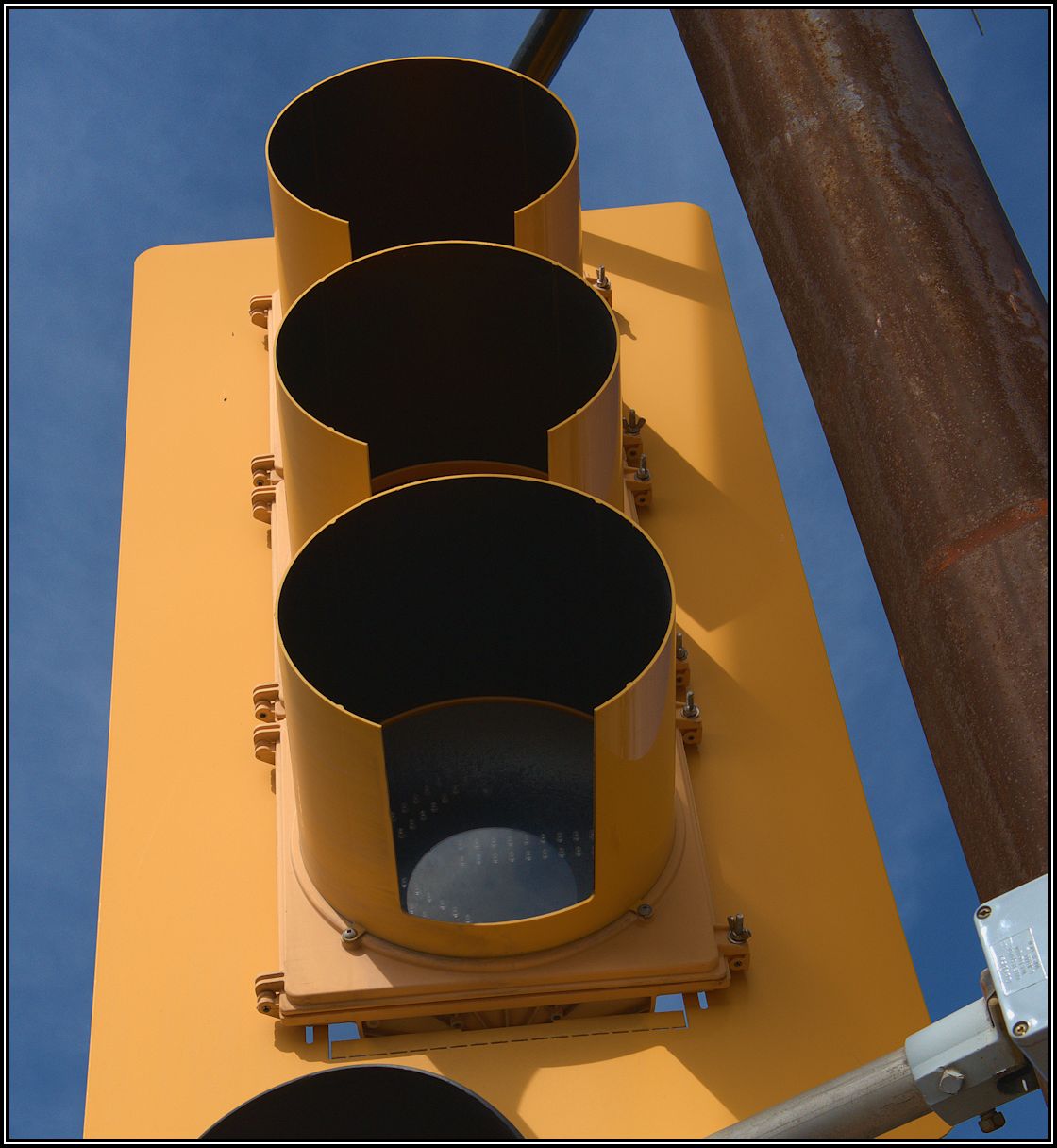
Toyota
D800 and 24 - 70 mm Nikkor, F/8, ISO 400 - no processing. JPEG created from NEF.
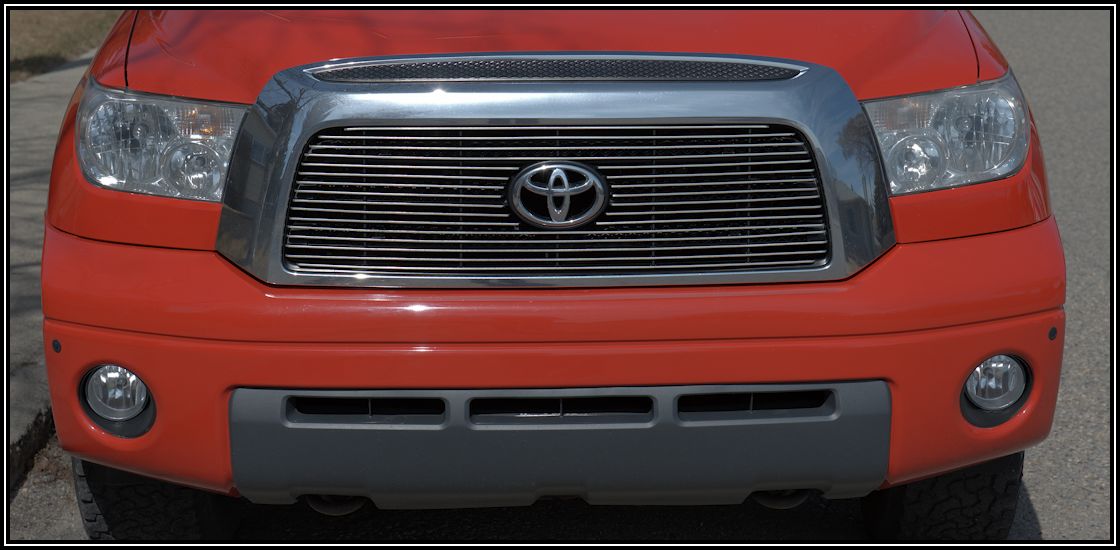
All remaining images taken with 105 mm Micro Nikkor VR
Harley - full frame
F/9, ISO 200. No sharpening or other processing applied
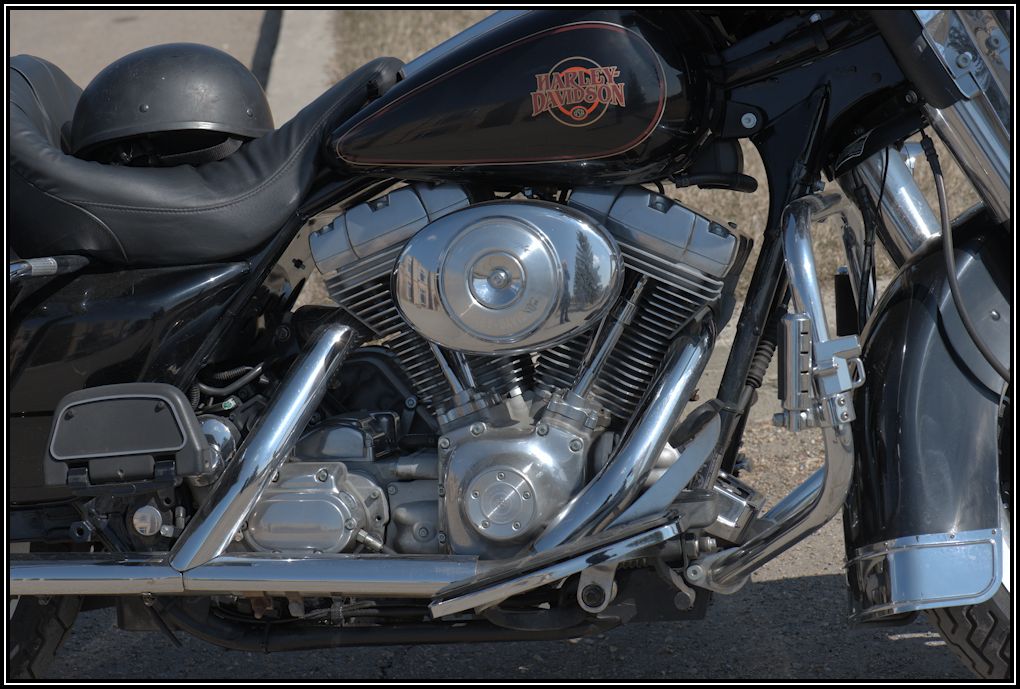
20% Crop (from a different source image)
ISO 200, F/14
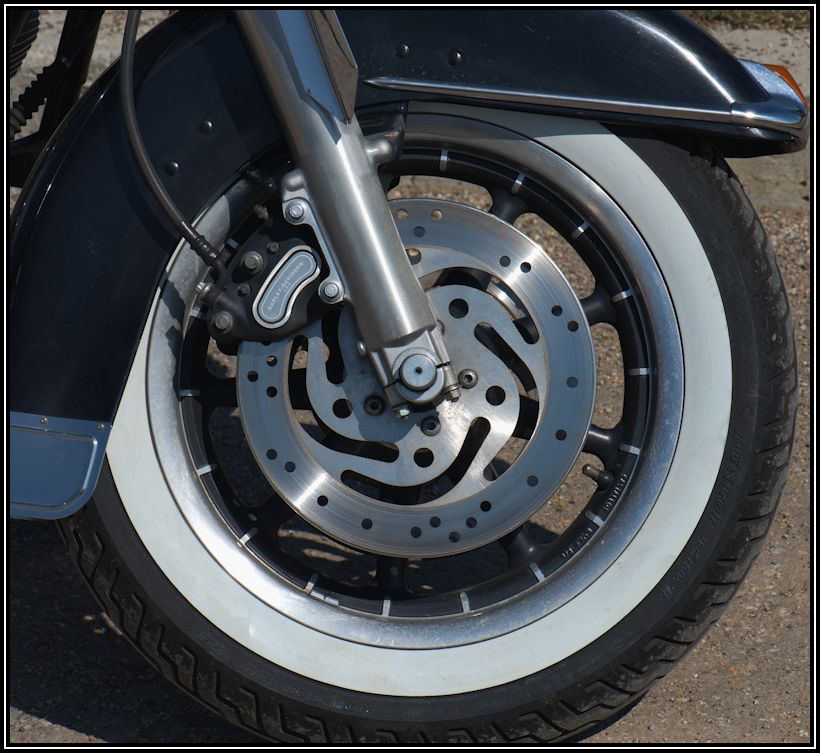
Crop from previous image - no processing
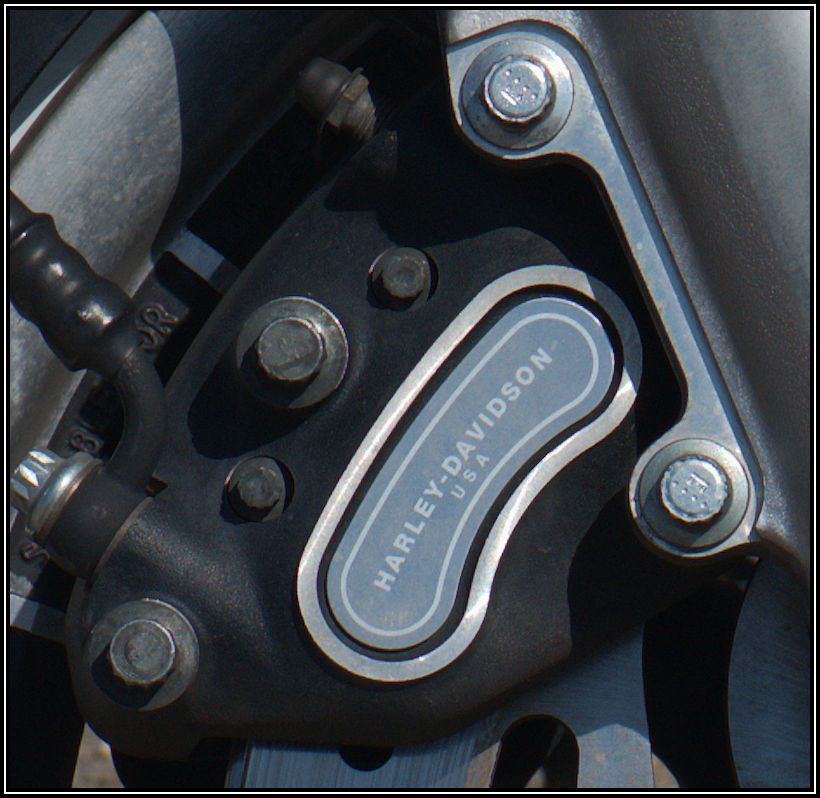
Beans - almost full frame
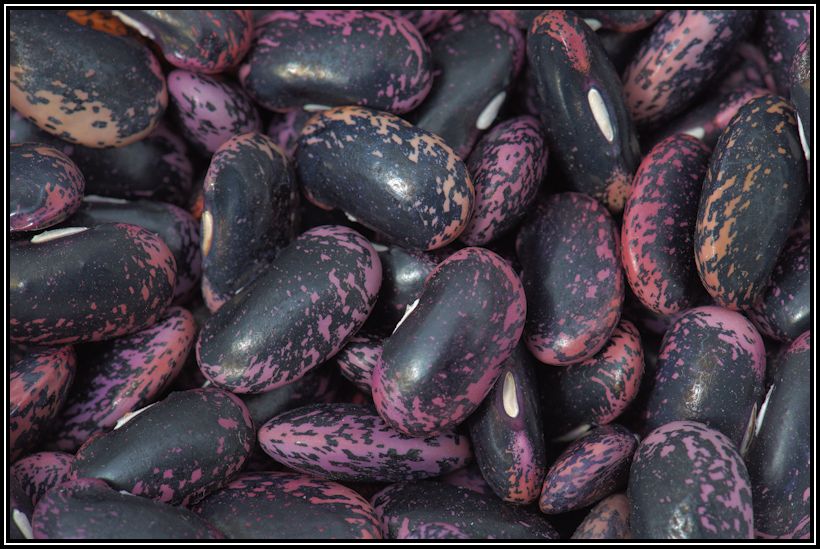
Head Lamp Assembly - 50% crop
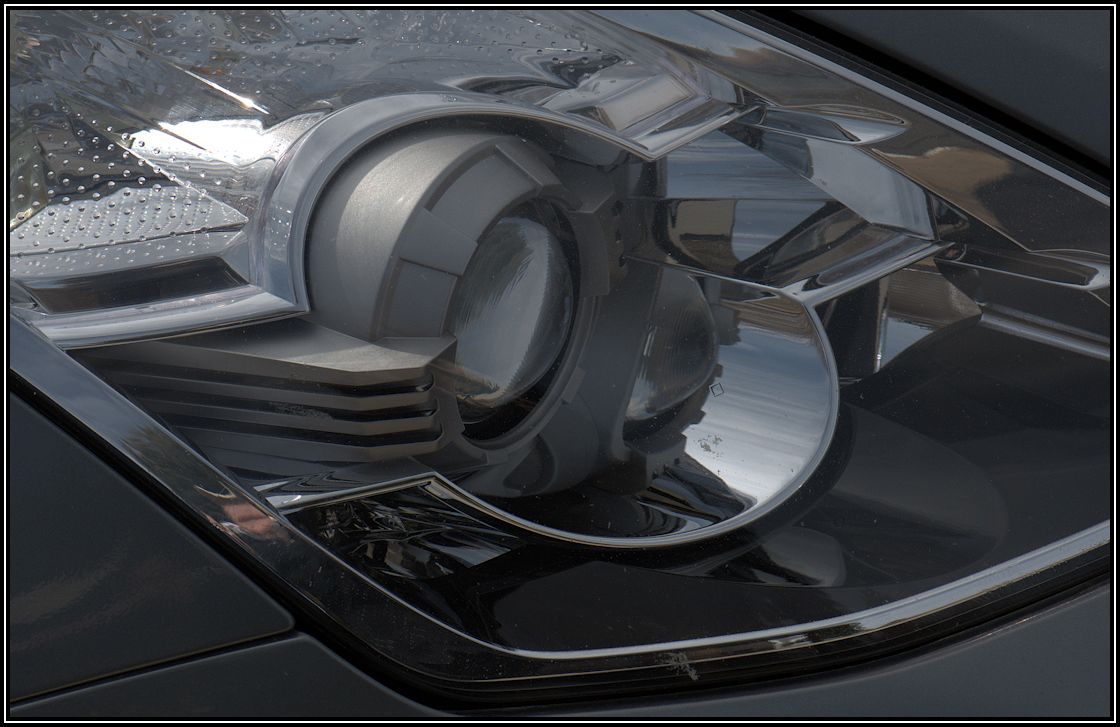
Tail Light - 90% crop
Graininess is actually the metallic paint fleck.
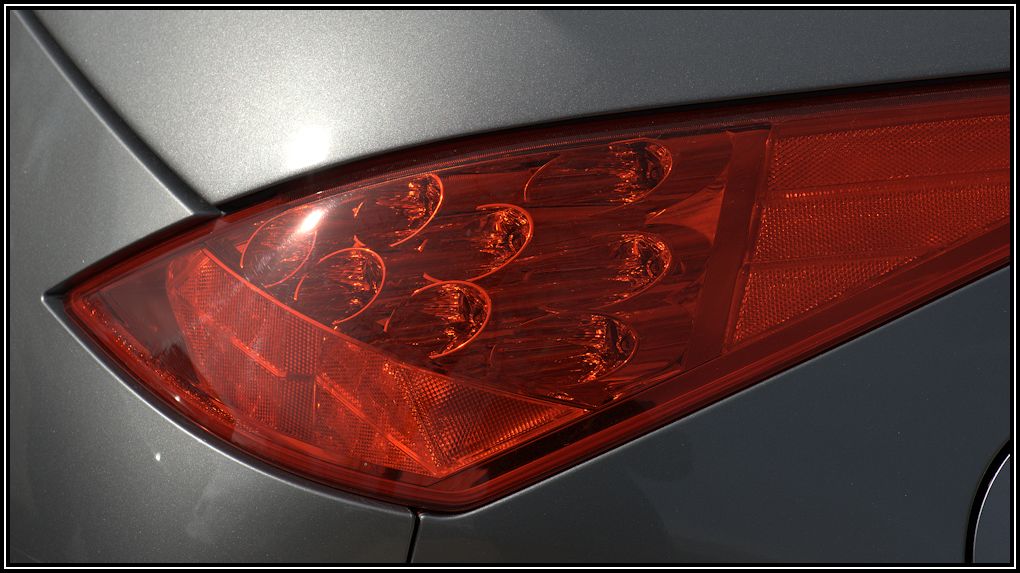
Wheel - 20% crop
What looks like contouring in the fender highlight is actually in the body-work. Again, paint fleck visible.
F/9, ISO 400
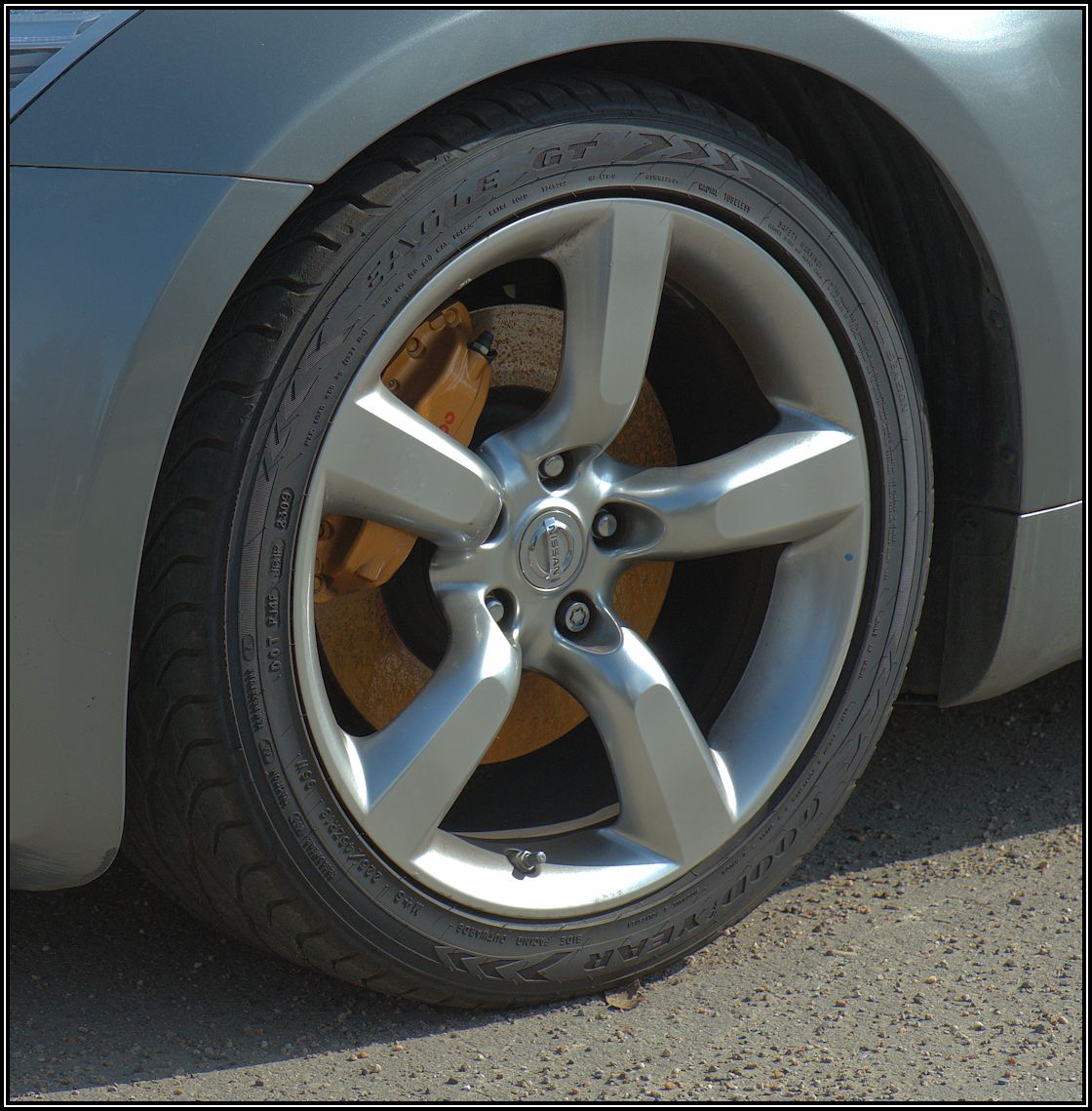
Nikon D800 review
2395